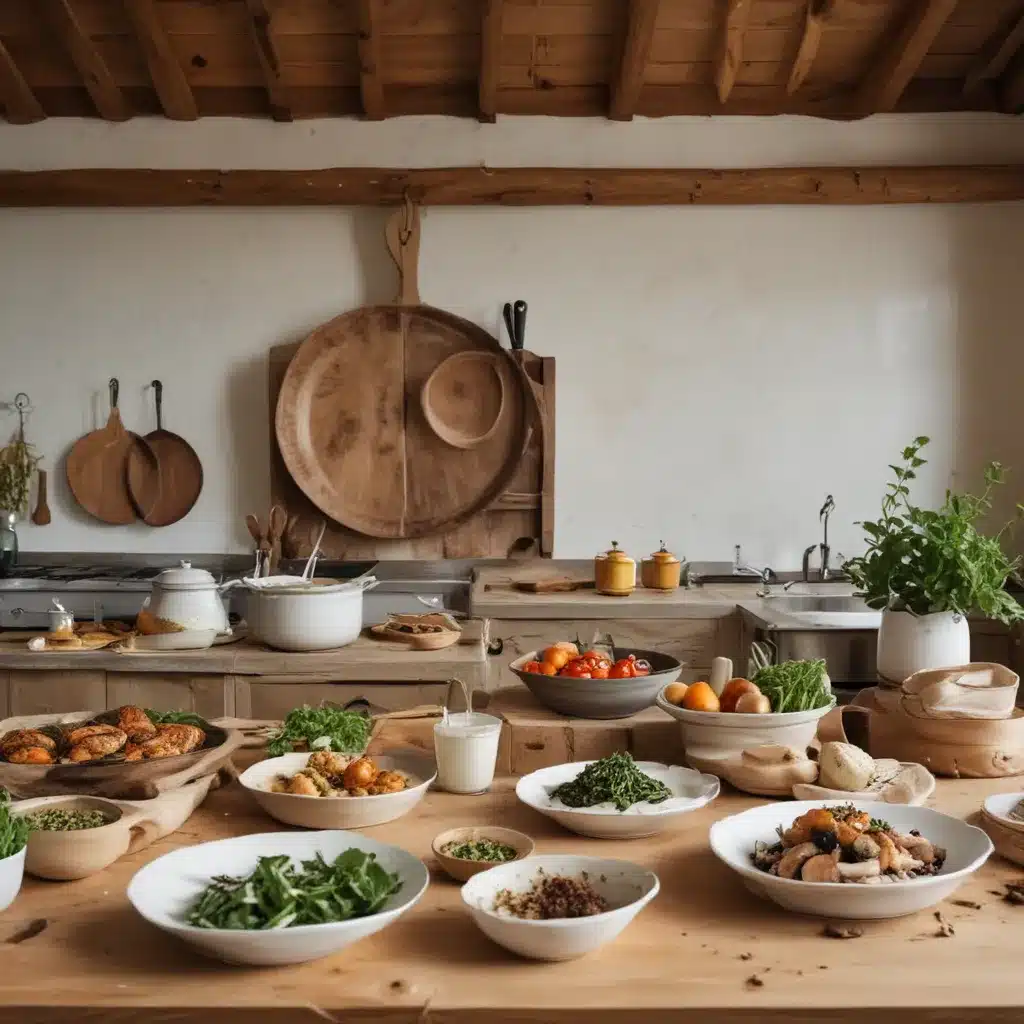
Uncovering the Flavors of the Philippine Islands
Ah, the Philippines – a land of sun-kissed beaches, vibrant culture, and a culinary adventure that will tantalize your taste buds. As an avid explorer and lover of all things gastronomic, I’ve had the privilege of embarking on a delectable journey through this archipelagic nation, and let me tell you, the flavors I’ve encountered have left an indelible mark on my palate.
The Philippines is a mosaic of diverse regional cuisines, each with its own unique personality, influenced by the country’s rich history, diverse ethnic groups, and the bountiful natural resources that surround it. From the bustling metropolis of Manila to the remote island communities, the culinary landscape is a tapestry of bold, complex, and utterly captivating flavors.
Discovering the Diversity of Philippine Cuisine
Have you ever wondered what it would be like to savor the fragrant aroma of freshly grilled seafood on a sun-drenched beach in Boracay? Or to indulge in a hearty bowl of steaming hot sinigang, the quintessential Filipino sour soup, while taking in the breathtaking vistas of Banaue’s rice terraces? Well, let me tell you, the culinary adventures that await in the Philippines are truly boundless.
One of the things that fascinates me most about Philippine cuisine is its incredible diversity. Each region of the archipelago has its own distinct culinary identity, shaped by the local ingredients, cultural influences, and centuries-old traditions. Take, for example, the rich and vibrant flavors of Bicol, known for its spicy dishes like the fiery laing and the creamy coconut-based bicolano dishes. Or the delicate and delectable seafood specialties of the Visayas islands, where the bounty of the ocean is celebrated in every bite.
Exploring the Flavors of the Philippines
As I delve deeper into the culinary landscape of the Philippines, I’m constantly amazed by the sheer ingenuity and creativity of the local chefs and home cooks. They seamlessly blend the flavors of the East and the West, creating dishes that are both familiar and unexpected.
Take, for instance, the iconic adobo – a dish that is as ubiquitous as it is diverse. Each household and region has its own interpretation, with variations that incorporate different proteins, spices, and cooking techniques. I’ve had the pleasure of savoring adobo that ranges from the rich, soy-based version to the tangy, vinegar-infused rendition, and each one has left me craving for more.
And let’s not forget the mouthwatering street food that can be found in every corner of the Philippines. From the crispy and flavorful lechon (roast pork) to the steaming hot fishballs and the irresistible halo-halo (a refreshing dessert made with shaved ice, sweetened beans, and various toppings), the culinary delights of the Philippines are truly endless.
Savoring the Flavors of the Archipelago
As I reflect on my culinary adventures in the Philippines, I’m struck by the incredible depth and complexity of the country’s cuisine. It’s a gastronomic tapestry that weaves together the influences of China, Spain, Malaysia, and even the United States, creating a truly unique and captivating flavor profile.
One of the things that I find most fascinating about Philippine cuisine is the way it seamlessly blends the traditional and the modern. While the country’s rich culinary heritage is deeply rooted in centuries-old recipes and techniques, the contemporary chefs and food innovators are constantly pushing the boundaries, experimenting with new ingredients and bold flavor combinations.
Take, for instance, the rise of the Filipino food movement, where chefs and home cooks are rediscovering the beauty and versatility of indigenous ingredients. From the earthy and fragrant ginger-infused silog (breakfast dishes) to the vibrant and colorful heirloom rice varieties, the Philippines is a treasure trove of culinary wonders waiting to be explored.
Embracing the Culinary Traditions of the Islands
As I dive deeper into the world of Philippine cuisine, I’m struck by the strong sense of community and tradition that permeates the culinary landscape. Food is not just a necessity, but a means of cultural expression, a way to connect with one’s heritage, and a celebration of the country’s rich diversity.
In the remote villages and island communities, I’ve had the privilege of witnessing the time-honored traditions of food preparation and shared meals. Whether it’s the communal feasting during a fiesta or the intricate process of making local delicacies like the delicate puto or the sticky, sweet kalamay, there is a deep reverence for the culinary arts that is truly inspiring.
One of the things that has left a lasting impression on me is the way the Filipinos approach food as a shared experience. Meals are often served family-style, with dishes placed in the center of the table, encouraging everyone to dive in and savor the flavors together. It’s a testament to the country’s strong sense of community and the belief that food is not just sustenance, but a means of bringing people together.
Uncovering the Wellness Aspects of Philippine Cuisine
As I continue to explore the diverse culinary landscape of the Philippines, I’ve also been intrigued by the wellness aspects of the country’s traditional cuisine. From the use of locally sourced, nutrient-dense ingredients to the holistic approach to food preparation, the Philippines offers a wealth of culinary wisdom that can benefit both the body and the soul.
One of the standout examples of this is the traditional Filipino healing dishes, such as the fragrant and nourishing arroz caldo (a savory rice porridge) or the restorative sinigang. These dishes are not just delicious, but they’re also imbued with the wisdom of generations, using natural ingredients and time-honored techniques to support overall well-being.
Moreover, the Philippines’ rich biodiversity has given rise to a wealth of indigenous superfoods and medicinal herbs that are being rediscovered and incorporated into modern wellness practices. From the antioxidant-rich moringa (also known as malunggay) to the immune-boosting properties of turmeric, the archipelago is a treasure trove of natural healing wonders.
Embracing the Future of Philippine Cuisine
As I reflect on my culinary journey through the Philippines, I’m filled with a sense of excitement and anticipation for the future of the country’s cuisine. With the growing global interest in Filipino food and the efforts of local chefs and food innovators to showcase the diversity and complexity of their culinary heritage, the Philippines is poised to make a significant impact on the international culinary landscape.
One of the trends that I’m particularly excited about is the rise of Filipino-fusion cuisine, where chefs are blending traditional Filipino flavors with global influences, creating truly unique and innovative dishes. From the creative use of local ingredients in modern interpretations of classic dishes to the incorporation of sustainable and ethical practices in food production, the Philippines is leading the charge in redefining the future of cuisine.
Moreover, the country’s commitment to preserving its culinary traditions and promoting food tourism is commendable. Initiatives like the popularization of regional delicacies, the establishment of local food trails, and the recognition of heritage food producers are all contributing to the ongoing evolution of Philippine cuisine.
As I plan my next adventure in the Philippines, I can’t help but feel a sense of anticipation and wonder. The culinary treasures that await me in this archipelagic nation are truly limitless, and I know that with every bite, every sip, and every shared experience, I’ll be uncovering new layers of flavor, tradition, and cultural richness.
So, if you’re ready to embark on a gastronomic journey like no other, I highly recommend exploring the captivating cuisines of the Philippines. Whether you’re seeking a weekend getaway, a cultural immersion, or an adventure in the great outdoors, the Philippines has something to offer that will leave you craving for more. And who knows, you might just discover a new favorite dish or uncover a hidden culinary gem that will forever change the way you think about food.
Ready to experience the flavors of the archipelago? Check out our Philippine Getaway services and let us help you plan your ultimate culinary adventure.


